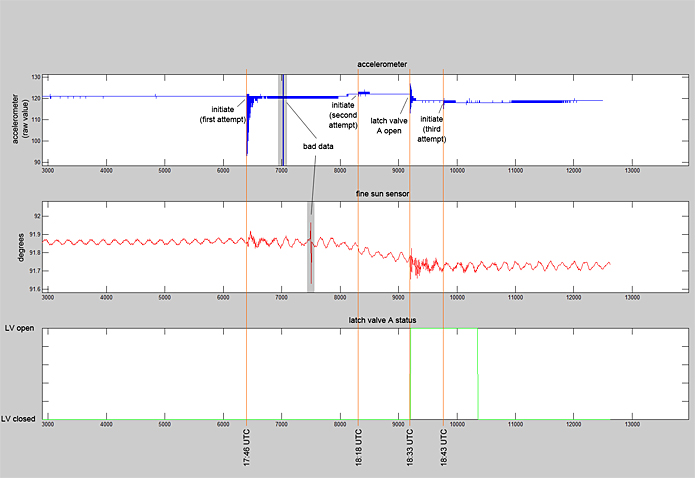Not every space story can have a Hollywood ending, and unfortunately it's looking like the situation with the newly resurrected ISEE-3 space probe is going to have a bittersweet conclusion. The International Sun-Earth Explorer 3 satellite has been dormant since 1998, but a crowdfunded group of "citizen scientists" were given permission by NASA to assume control of the spacecraft and see about bringing it into a closer orbit. The group, called the ISEE-3 Reboot Project, has been posting periodic updates on its blog, but the latest news isn't good at all—ISEE-3's thrusters aren't operating as expected.
The probe uses small monopropellant rockets for attitude and translation (i.e., turning and moving); these thrusters work by squirting some amount of toxic hydrazine fuel into a thrust chamber coated with a catalyst. The hydrazine reacts very energetically with the catalyst, and the resulting puff of gas is directed out of a thrust nozzle, turning or moving the craft. The catch—and this is a catch for any engine—is that you need a way to move the fuel from its tank into the engine. For most rocket engines intended to operate in microgravity and vacuum, the simplest way to do this is not with complex pumps but rather by pressurizing the fuel tank with some amount of non-reactive gas (nitrogen is the most common). When you need to fire the engine, you squeeze fuel out of the tanks by pushing in more nitrogen.
It appears that ISEE-3's nitrogen reserves have either been depleted or have leaked away into the void. Although the spacecraft was able to act on some of the commands sent to it during a spin-up on July 3 and a Trajectory Correction Maneuver on July 8, the ISEE-3 Reboot Project scientists suspect that the spacecraft's initial movement was the result of residual pressurized fuel in the propulsion system. The team has been performing remote troubleshooting on the craft and they believe they have eliminated malfunctioning valves and other hardware issues as a source of failure (and you thought fixing your parents' e-mail over the phone was hard!).
Read 2 remaining paragraphs | Comments
